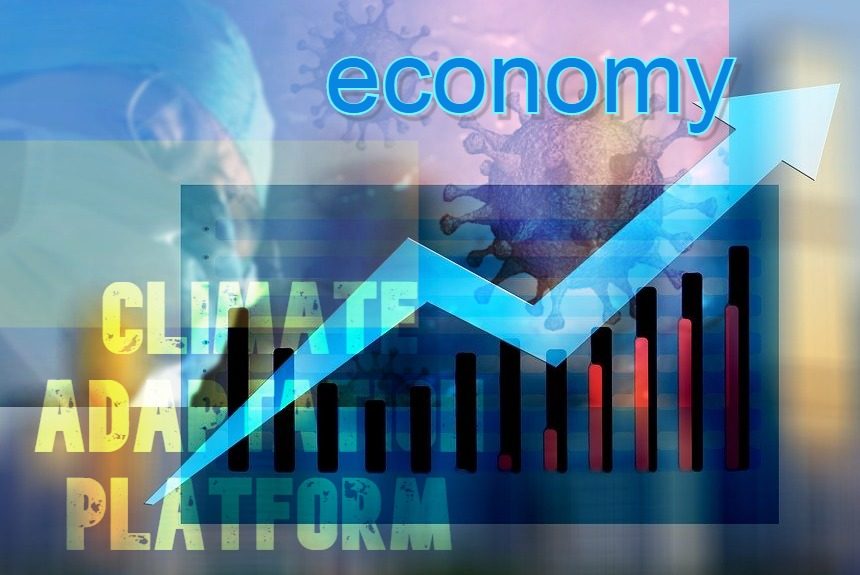The editorial of the Economist news magazine cites similarities between climate change and COVID-19. Both are global crises, borderless, and require significant changes in human behaviour and economic activities.
However, environmentalists are asking why governments and the public don’t have the same resolve towards climate change as what they show in containing the virus.
And what are the lessons we should learn from the pandemic that can be applied to the climate crises?
The difference between coronavirus and climate change is the time that affects the immediacy or urgency of action.
While COVID-19’s effects are immediate and fast – people have died and got sick, thus the rapid shutdown of travel, movement, and business globally.
Climate change, on the other hand, is also killing people slowly and gradually through extreme natural events like floods, storms, and wildfires.
Solutions to climate change are about transformation – shifting to renewables and low-carbon technology while COVID-19 is about lockdowns and cutting movement to the most essential things like buying food or medicines, which is not sustainable nor desirable in the long term.
However, the climate crisis remains even when the pandemic ends.
An article by the Economist says that the coronavirus pandemic-caused lockdowns around the world have been good for the environment. It cites Venice’s canals running clear, drops in carbon emissions in South Korea, 8-10% in New York City, and, of course, China’s 25% emissions reduction in February.
But the question remains: Will these reductions continue after the pandemic? Experts say it is highly unlikely, and instead, it could even turn for the worse.
If the OECD’s forecast of a fall in the global GDP due to the pandemic comes true, then a fall in emissions will follow as well.
However, following the global financial crisis of 2007-2009, China and India’s economies grew rapidly, and stimulus packages specially designed to promote carbon-intensive areas of business were introduced.
In the United States, President Trump is pushing the $2 Trillion infrastructure bill to revive its economy as a response to the coronavirus pandemic. The infrastructure bill will revamp America’s roads, bridges, tunnels, and ports, create jobs, and rebuild the country’s infrastructure (Stein & Kim, 2020).
In one of his daily press conferences amid the pandemic, President Trump stated that the US would seriously invest in infrastructure that would create jobs and set aside “green technology.”
A hint perhaps that the US will ease its carbon policies in favour of saving its economy badly hit by the coronavirus. With millions of Americans losing their jobs and struggling to put food on their tables, who can blame him?
The Economist article mentions Canada preparing to bail out its oil and gas industry, the Chinese provinces preparing to spend $ 3.5 trillion on construction, and China deferring on an auction to build several large solar farms.
These plans will undoubtedly push renewable energy and green technology aside as governments scramble to revive their economies and recover their losses. The postponement of COP26 in Glasgow this November can derail countries’ determination to reduce emissions.
But there is still hope.
Pre-COVID, the airline industry launched a carbon offsetting scheme called CORSIA, designed to maintain net global emissions from aeroplanes through tree planting projects and carbon capture schemes at landfill sites. Hopefully, airlines will still follow through with this plan after the pandemic.
Governments spending to boost their economies can turn towards climate-friendly versions of heavy-emitting industries like transportation, construction, and energy into solar energy, battery for electric batteries, and invest money for research on hydrogen-powered fuel cells, and zero-emission production of cement and steel, the article said.
Whichever direction the governments take, either the familiar path of fossil fuels or the renewable technology path to revive the economy, we will know once countries have overcome the pandemic. That will be when the anti-COVID-19 vaccine will be discovered and produced as soon as possible.
Sources
The epidemic provides a chance to do good by the climate. (2020, March 26). COVID-19 and climate change. The Economist. Retrieved from https://www.economist.com/science-and-technology/2020/03/26/the-epidemic-provides-a-chance-to-do-good-by-the-climate
Stein, J. & Kim, S.M. (2020, April 1). Trump pushes $2 trillion infrastructure package in next coronavirus bill, saying it must be “Very Big and Bold”. Washington Post. Retrieved from https://www.washingtonpost.com/business/2020/03/31/trump-democrats-coronavirus-infrastructure/



Leave a Reply